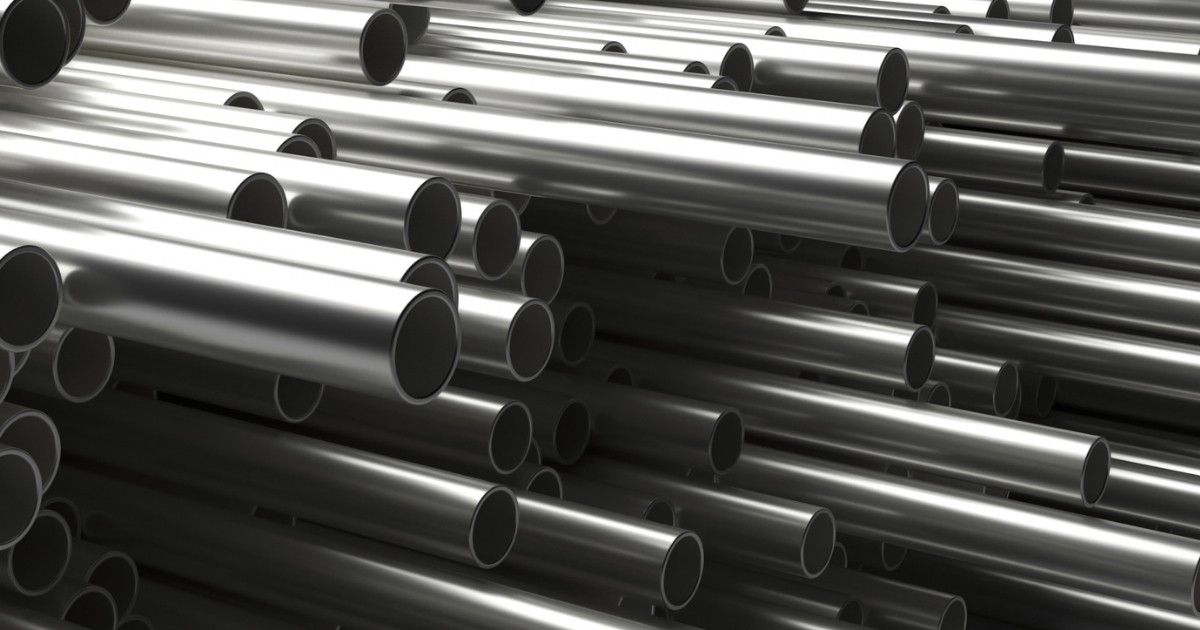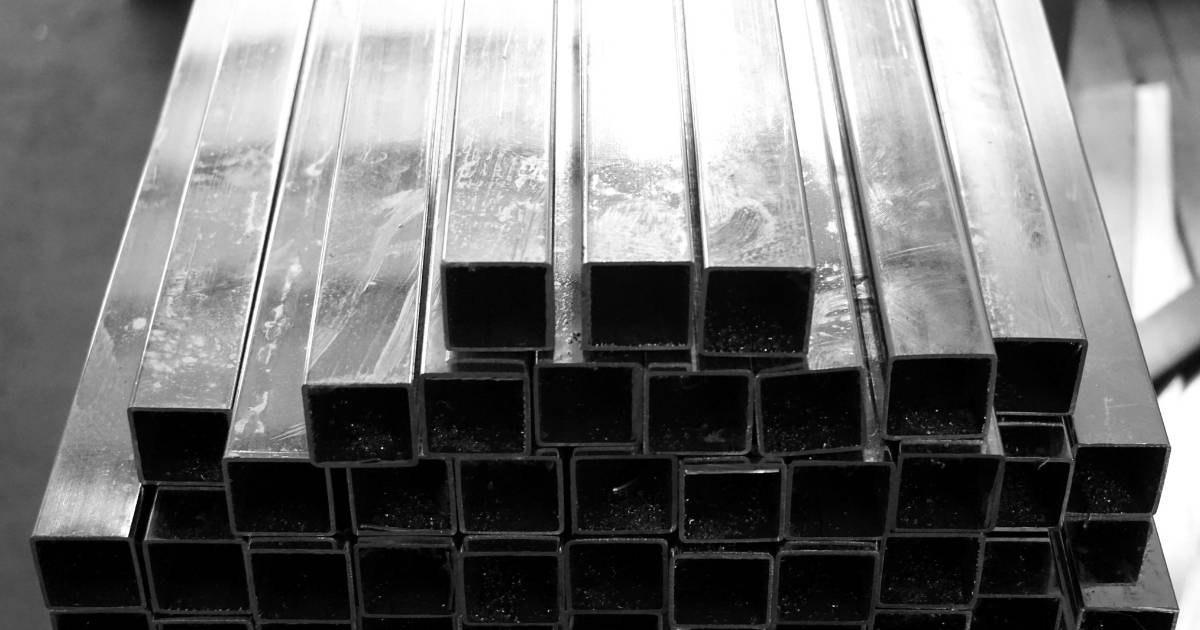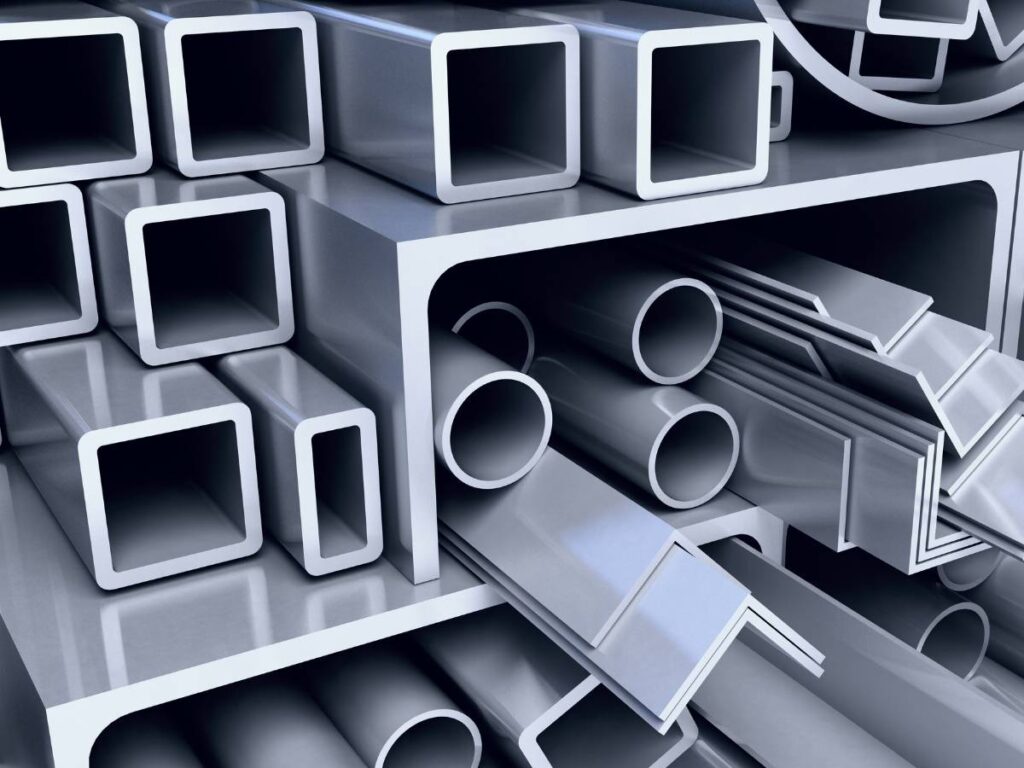Steel pipes and tubes are widely used in many industries, necessary for infrastructure, construction, manufacturing, and transportation. These flexible materials serve a purpose by facilitating the transport of fluids, gases, and solids over extensive distances. They provide required structural support, ensuring the stability and integrity of various systems and structures.
Whether choosing the appropriate conduit for fluid transmission or understanding the load-bearing capabilities of structural components, understanding the differences between pipes and tubes is essential for optimizing performance and ensuring the success of industrial projects.
Definition and Characteristics
Definition of Steel Pipes and Steel Tubes
Steel pipes and steel tubes are cylindrical conduits made of solid steel, designed to transport fluids, gases, and solids in various industries. These sturdy and durable materials are manufactured through hot rolling or cold drawing processes, resulting in their distinctive cylindrical shape.
Steel pipes are usually characterized by their larger diameters and thicker walls, while steel tubes are known for their smaller and thinner diameters. Both pipes and tubes are commonly made from carbon or alloy steel, which provides excellent strength and corrosion resistance. They are widely used in infrastructure projects, including water and gas pipelines, oil refineries, and sewage systems.
Steel pipes and tubes are widely used for applications in construction, where they are utilized for structural support, and in manufacturing industries for conveying raw materials and finished products. The versatility and reliability of steel pipes and tubes make them main components in the efficient functioning of various industrial processes.
Common Characteristics Overview
Steel pipes and steel tubes have some common characteristics that make them really important in various industries. Firstly, both are constructed from steel. This ensures that pipes and tubes can withstand high pressure and extreme conditions without compromising structural integrity.
They are hollow structures that provide a channel through which fluids, such as water, oil, and gases, can be efficiently transported. This allows for the seamless flow of materials, contributing to the smooth operation of industrial processes. Steel pipes and tubes come in various sizes and shapes, catering to different applications’ specific needs and requirements.
From large-diameter pipes used in major pipelines to small-diameter tubes utilized in precision instruments, these variations in size and shape enable versatility in their usage across industries. Whether for water distribution, oil transportation, or even structural support, steel pipes, and tubes offer practical solutions for fluid and gas transportation, making them indispensable components in countless industrial settings.
Manufacturing Process

Steel Pipe Manufacturing
Steel pipe manufacturing is a fascinating process that involves transforming raw steel into functional conduits for various applications. The process begins with selecting high-quality steel, which undergoes rigorous quality checks to ensure suitability. Two primary methods of manufacturing steel pipes are widely employed: seamless and welded. Seamless pipes are created by piercing a solid steel billet to form a hollow cylindrical shape without seams.
This method ensures a uniform structure and excellent strength, making seamless pipes ideal for high-pressure applications like oil and gas transportation. On the other hand, welded pipes are fabricated by joining steel plates or coils together through welding techniques. This process allows for greater versatility in size and shape, making welded pipes ideal for a wide range of applications, including water distribution, structural support, and plumbing systems.
The applications of steel pipes cover many industries, from large-scale infrastructure projects like pipelines and oil refineries to everyday uses like plumbing and heating systems. The manufacturing process plays a role in determining the characteristics and performance of steel pipes, ensuring their reliability and efficiency in fulfilling different industrial needs.
Steel Tube Manufacturing
Steel tube manufacturing involves transforming solid steel into versatile cylindrical conduits suitable for many applications. The manufacturing process begins with selecting high-quality steel, ensuring its suitability for the desired end-use. Two primary methods are employed in steel tube manufacturing: seamless and welded. Seamless tubes are created by piercing a solid steel billet, resulting in a cylindrical shape without any seams.
This method ensures uniformity, exceptional strength, and resistance. It makes seamless tubes ideal for critical applications such as automotive components and precision instruments. Welded tubes, conversely, are fabricated by joining steel plates or coils through welding techniques. This method allows for flexibility in size and shape, making welded tubes suitable for various applications, including furniture, construction, and ornamental purposes.
Steel tubes are widely used in automotive, construction, and manufacturing industries, serving as structural components, conveyors of fluids, and support for electrical wiring. The tube manufacturing process, whether seamless or welded, ensures the production of reliable and high-performance tubes that meet the specific demands of different sectors, contributing to the seamless functioning of various industrial processes.
Differences in Shape and Size

Pipe Shape and Size
Steel pipes are characterized by their cylindrical shape, designed for efficient fluid and gas transportation. These pipes typically follow standardized dimensions to ensure compatibility and ease of use across industries. The nominal pipe size (NPS) system is widely used to categorize pipes based on their diameter. This system assigns a specific NPS value to each pipe, representing its approximate inner diameter.
Pipes are categorized into different schedules, which indicate the wall thickness. Each schedule has a corresponding pipe thickness, allowing various applications with varying pressure requirements. For instance, Schedule 40 pipes have a medium thickness and are commonly used for general-purpose applications, while Schedule 80 pipes have a thicker wall suitable for high-pressure applications.
These standardized dimensions and schedules provide a common language for pipe selection and ensure compatibility between different components within a system. By understanding the dimensions and schedules of steel pipes, individuals can make informed decisions about the appropriate pipe size and wall thickness for their specific needs, enabling efficient and reliable fluid transportation.
Tube Shape and Size
Steel tubes have different shapes, including the classic round shape and square and rectangular variations. These shape options allow for application versatility, catering to different design requirements. One aspect of steel tubes is their precise outside and inside diameters, which are essential in determining their compatibility with fittings and connectors.
The outside diameter ensures a proper fit within supporting structures, while the inside diameter governs the flow capacity of fluids or gases. Wall thicknesses also play a big role and are measured using gauge measurements. A smaller gauge indicates a thicker wall, increasing strength and durability.
On the other hand, a more significant gauge number shows a thinner wall, suitable for applications where weight reduction is essential. Understanding the shape, outside and inside diameters, and the wall thicknesses of steel tubes allow for proper selection and seamless integration within a project. This knowledge ensures that the appropriate tube size and specifications are chosen, promoting efficiency and structural integrity in different industries ranging from construction to manufacturing.
Variations in Usage

Pipes: Conveying Fluids and Gases
Pipes help in efficiently conveying fluids and gases. Their primary function is facilitating the transportation of liquids and gases from one point to another. In plumbing systems, pipes distribute water throughout buildings, ensuring a reliable water supply for everyday use.
Similarly, pipes transport petroleum products and natural gas over long distances in the oil and gas industry, connecting extraction sites to refineries and distribution networks. Tubes also find application in industries such as chemical processing, allowing the safe and efficient transfer of various chemicals. The versatility of pipes extends to sectors like mining, where they facilitate the movement of slurry and mine tailings.
Whether it’s the water flowing through our faucets or the oil powering our vehicles, pipes are the silent heroes that enable the seamless movement of fluids and gases, playing a big role in keeping our modern world functioning smoothly.
Tubes: Structural Applications
Tubes have a big role in various industries, particularly in structural applications where their strength and versatility shine. One of the primary functions of tubes is to provide structural support in construction projects. Whether building frames, scaffolding, or bridges, steel tubes have excellent load-bearing capabilities and durability. In the automotive industry, tubes are employed in manufacturing vehicle frames, roll cages, and exhaust systems, where their high strength-to-weight ratio is a big advantage.
Tubes are also widely used in manufacturing furniture, playground equipment, and even in creating artistic sculptures. The aerospace industry also relies on tubes to construct aircraft frames and components that require strength and lightweight properties. Tubes’ ability to withstand heavy loads and resist deformation makes them a go-to choice in industries prioritizing structural integrity. From towering skyscrapers to reliable vehicles, tubes provide the essential framework that supports our daily lives.
Strength and Rigidity

Pipes: Designed for Strength
Pipes are engineered to withstand high pressure and stress, making their strength very important. The design of pipes prioritizes their ability to contain fluids and gases under great pressure, ensuring efficient transportation without leakage or structural failure. Reinforced pipes come into play in applications where extreme conditions are common, such as offshore drilling or deep underground pipelines.
These pipes are constructed with additional layers of reinforced materials to enhance their resilience and durability. Reinforcements can include external coatings for corrosion resistance, inner linings to resist abrasion or even fiber-wound layers for added strength. These reinforcements allow pipes to withstand harsh environments, extreme temperatures, and corrosive substances, ensuring the safe and reliable transportation of fluids and gases even in the most challenging conditions.
Whether carrying water through miles of pipeline or transporting oil across vast distances, pipes are engineered to be sturdy guardians that ensure the smooth and secure flow of materials in various industries.
Tubes: Designed for Rigidity
Designers prioritize structural integrity and load-bearing capacity when designing tubes. Their primary purpose lies in providing rigid support in a variety of applications. Steel tubes are available in different types, each tailored to meet specific strength requirements.
For instance, hollow structural sections (HSS) are widely used in construction due to their superior strength and ability to bear heavy loads. Many favor rectangular or square tubes for their stability and resistance to bending. This makes them ideal for architectural frameworks and industrial structures.
Round tubes offer excellent torsional rigidity, making them suitable for rotational forces applications, such as automotive chassis. These specialized designs ensure tubes can efficiently distribute weight and withstand external pressures. This ensures the stability and longevity of the structures they support. Tubes are robust pillars, serving as the backbone of buildings, bridges, and machinery, providing rigidity and support for various industries.
Cost Considerations
Both pipes and tubes have associated manufacturing costs, but there are some differences to consider. Pipes, especially seamless ones, often require more complex manufacturing processes, resulting in higher production costs.
On the other hand, welded tubes can be more cost-effective due to their more straightforward manufacturing techniques. But, it’s important to note that the specific dimensions, materials, and required specifications can also affect the manufacturing costs.
The size and weight of the pipes or tubes and the transportation distance can cause variations in transportation costs. Installation costs also play a role, especially in complex projects requiring specialized equipment or expertise.
Evaluating the overall cost-effectiveness is done by considering the project’s specific requirements and balancing them against the associated costs. Making informed decisions regarding the cost factors of pipes and tubes ensures that projects stay within budget. At the same time, it still maintains the required quality and functionality.
Decoding the Distinctions between Steel Pipes and Steel Tubes
Understanding the differences between pipes and tubes is necessary for industry professionals and consumers. These distinctions involves their applications, shapes, sizes, and manufacturing processes. Pipes and tubes serve different purposes. People primarily design pipes for fluid and gas transportation, while they excel in structural applications for tubes.
Their shapes vary, with pipes typically having a cylindrical form and tubes available in round, square, or rectangular shapes. Pipes follow the nominal pipe size (NPS) system, while tubes comply with the precise outside and inside diameter measurements.
Manufacturing processes also differ, with seamless and welded pipe methods and similar techniques employed for tubes. By recognizing these differences, industry professionals can make informed decisions when selecting the appropriate material for their needs. Consumers, too, benefit from understanding these distinctions when choosing products for their homes or vehicles.
Recognizing the varied applications, shapes, sizes, and manufacturing processes helps ensure optimal performance, durability, and cost-effectiveness. Industry professionals and consumers can make knowledgeable choices by understanding the differences between pipes and tubes.
Our Locations
Get a Quote Now
